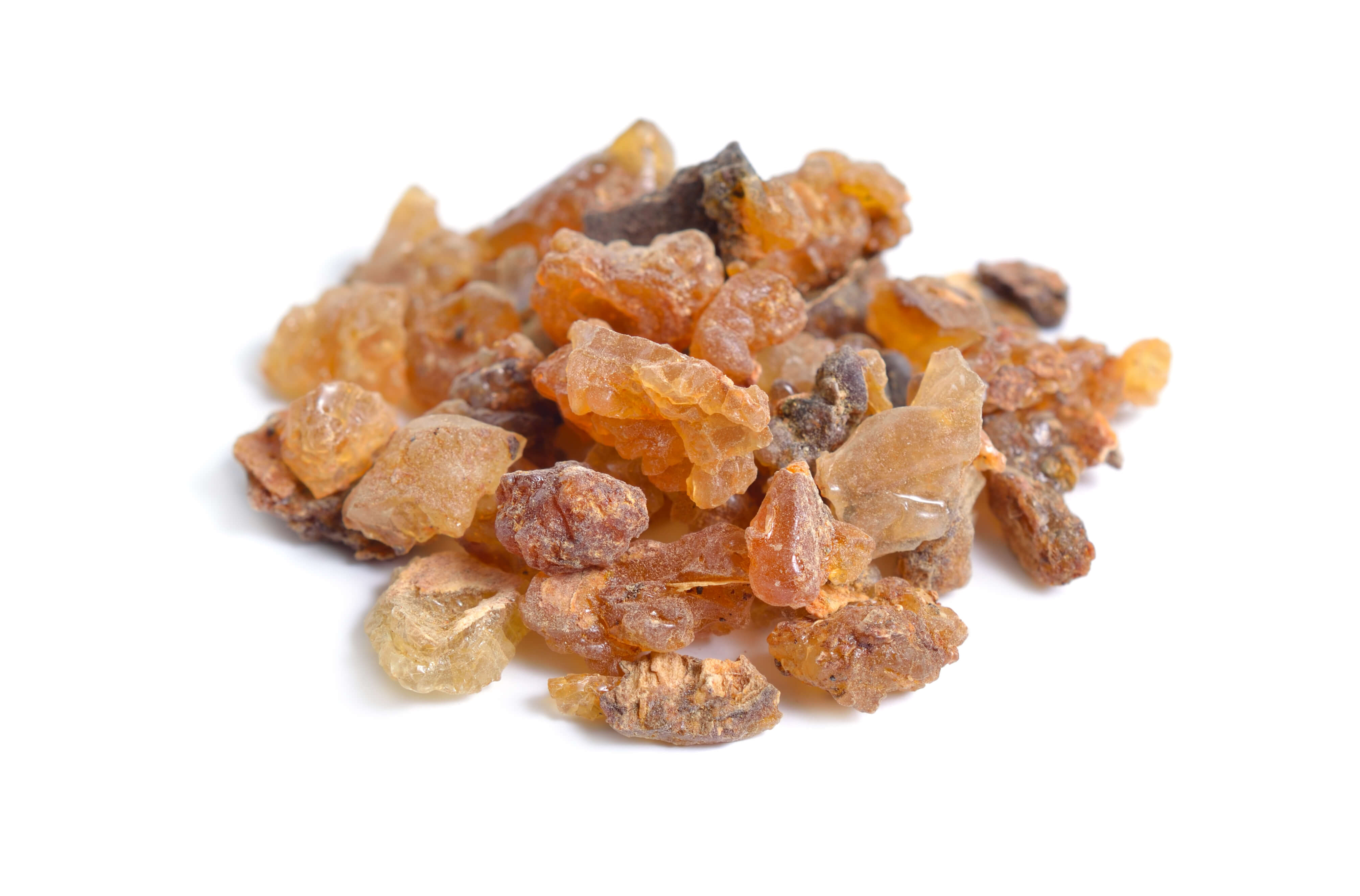
Do you sell any of the raw materials? Would you like to let our users know?
Send an email to fournisseurs@scentree.coto learn about our advertising opportunities.
Do you sell any of the raw materials? Would you like to let our users know?
Send an email to fournisseurs@scentree.coto learn about our advertising opportunities.
General Presentation
-
CAS N° : 8016-37-3
-
EINECS number : 232-543-6
-
FEMA number : 2766
-
Density :
-
Optical rotation : Donnée indisponible
-
Allergens : This ingredient does not contain any allergen.
-
Refractive Index @20°C : Donnée indisponible
-
Volatility : NON TROUVE_
-
Price Range : €€€
-
Appearance : Orange to brown solid
Uses
Other comments :
Stability :
Solubility issues in perfumes
The terpenes identified in this raw material can polymerize when they are oxidized
Uses in perfumery :
Data not available.
Major Components :
Data not available.

Photo credits: ScenTree SAS
Botanique :
Commiphora myrrha (Nees) Engl.
Synonyms : Balsamea myrrha (T.Nees) Oken // Commiphora coriacea Engl.
Chemotypes :
Commiphora genus includes about 190 species.
In perfumery, we use Commiphora myrrha (Myrrh Resinoid / Myrrh EO / Myrrh SFE / Myrrh Absolute) grown mainly in North-East Africa.
Like olibanum, the notion of varieties and chemotypes is very blurred.
Extraction process :
Somalia is the main producer of myrrh, as its dry and warm savannas are favourable to the cultivation of this tree.
The exsudation of the resin takes place naturally or by an incision on the tree. The resin becomes red and solidifies when in contact with air, forming the ''myrrh tears ''. These tears are collected with a blade and freed from their impurities. Then, they are exported to Europe where they are extracted.
An essential oil such as a resinoid can be obtained. The resinoid results from the extraction of the resin with alcohol. The alcohol precipitates the waxes out of the resin and keeps only the fragrant principle after a glazing at 32 °F and a filtration, without any further reprocessing. The essential oil is obtained by hydrodistillation of the resin.
It is also possible to obtain a supercritical CO2 extract of myrrh with a superior olfactory quality.
The resinoid may be bleached by distillation.
Geographic origin :
Data not available.
Regulations & IFRA
This ingredient is not restricted

